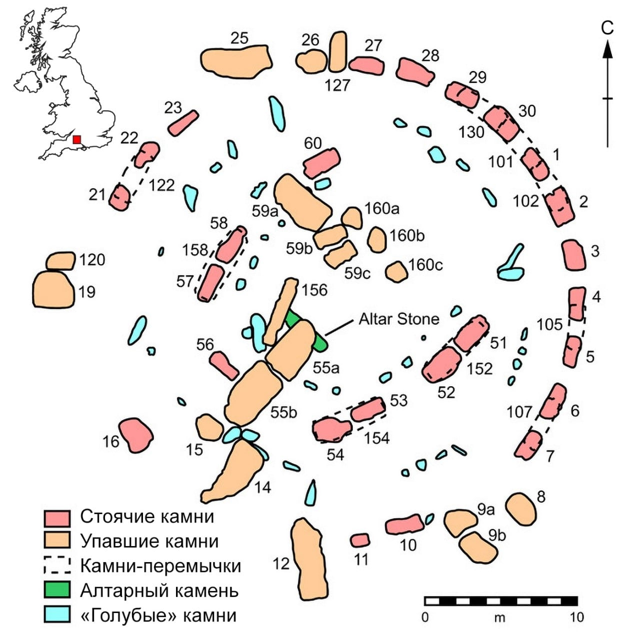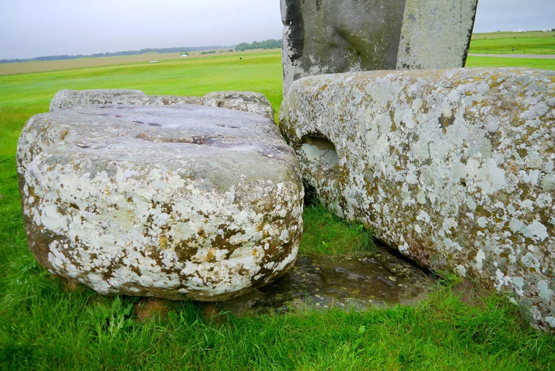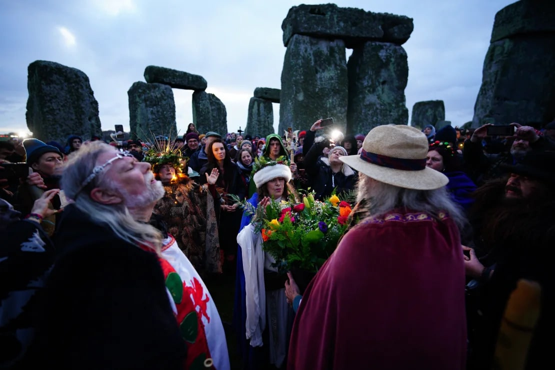Archaeologists have identified the reason why people restructured Stonehenge four thousand years ago.
Stonehenge is a megalithic stone structure located on the Salisbury Plain in England. Construction began around 3100 BC and was completed closer to 1600 BC. Over this period, it underwent several phases of reconstruction, with decades or even centuries passing between each phase.
It is believed that the structure was erected by the peoples of the Neolithic era who inhabited the British Isles at that time. These individuals lived before the arrival of Celtic tribes and were descendants of migrants from the Middle East who arrived on the islands nearly six thousand years ago, bringing agricultural skills with them. Scholars suggest that the monument served as an astronomical calendar, a religious center, or a site for rituals related to solstices and equinoxes.
Stonehenge consists of massive stone blocks (both standing and fallen stones) arranged in a circular formation, surrounded by inner and outer earthworks as well as a ditch. The structure is made from rocks of various compositions. The large stones are made of sarsen, a type of rock primarily consisting of cemented sandstone. These stones weigh nearly 25 tons and measure two by four meters. The smaller stones, or "bluestones" (named for their distinctive bluish hue that appears when wet), are composed of 20 different types of rocks. The most common type of "bluestone" is dolerite.
Extensive excavations in recent years and isotopic dating have helped archaeologists uncover many secrets of this prehistoric monument. However, despite numerous studies, experts still cannot provide precise answers to several questions, such as the true purpose of Stonehenge and how people transported the enormous stones over great distances.

In recent years, scientists have proven that the megaliths that make up Stonehenge were brought from different parts of the British Isles. In 2015, a team led by English archaeologist Mike Pearson (Mike Pearson) from University College London discovered that the "bluestones" were transported from the Preseli Hills in southwest Wales, located 240 kilometers west of the megalithic site.
Researchers from a 2020 study found out that most of the large stones (sarsens) originated from the West Woods in Wiltshire, which is about 25 kilometers from Stonehenge. Finally, in August 2024, archaeologists determined that the six-ton Altar Stone, which lies on the ground at the center of the structure, was brought from northeast Scotland. According to the researchers, before reaching its final location, it traveled a distance of 750 kilometers, likely transported by sea. In other words, the majority of the stones that make up Stonehenge were sourced from far away.
Now, Pearson and his colleagues, based on recent research, have set out to understand why the inhabitants of the British Isles transported stones to the construction site from hundreds of kilometers away. In particular, the scientists are interested in the reasons for the extensive reconstruction of the structure that took place between 2620 and 2480 BC. During this time, scholars believe that the Altar Stone was introduced to Stonehenge. The findings of the research are presented in the journal Archaeology International.
In the mid-3rd millennium BC, the inhabitants of the British Isles shared a single material culture. During this period, settlers from Europe, particularly from modern-day Germany and the Netherlands, began arriving on the islands.
Pearson's team connected these two facts and concluded that the megalithic structure may have been reconstructed for political reasons — to create a symbol of unity among the peoples of Britain, marked by an eternal connection to their ancestors and the cosmos. According to the researchers, Stonehenge represents an attempt to unite the population of Neolithic farmers in the face of a new challenge — the influx of migrants from continental Europe.
The key argument put forth by the authors of the new study is the Altar Stone. Unlike most of the stones at Stonehenge, it lies flat on the ground. Archaeologists have long wondered whether the Altar Stone was ever erected vertically, but there is no convincing evidence to support this. Researchers have not found any hole where the megalith could have stood upright. Thus, they are confident that the stone was originally placed flat.

In northeast Scotland — from where the Altar Stone was determined to have originated — Neolithic peoples typically constructed small megalithic structures using lying stones. Pearson concluded that this indicates Stonehenge represents a convergence of several cultures: a blend of "standing" megaliths from southern Britain and "lying" stones from far northeast Scotland. This suggests that there may have been a closer connection between the ancient communities of these two regions than previously thought.
“The site on the Salisbury Plain was significant for people not only living nearby but also from distant corners of Britain. For the latter, Stonehenge was so important that they transported massive monoliths to it from hundreds of kilometers away,” explained Pearson.
The article provides additional evidence supporting this hypothesis. The authors explained that the type of ceramic ware associated with the grooved ware culture first appeared in the Orkney Islands in northeast Scotland and then quickly spread across Britain. Such a phenomenon had not occurred before. At that time, each region of Britain produced its unique pottery, but at some point, a common style emerged that was adopted widely. This kind of event indicates close connections between regions.

Furthermore, radiocarbon dating of human remains dating back several thousand years revealed that a significant portion of the population inhabiting Neolithic Britain was buried far from their homes. This indicates increased mobility among the population, suggesting that people moved between regions much more frequently than scholars had previously thought.
It is worth noting that on the mainland of Europe, Neolithic peoples sometimes constructed megalithic monuments using even larger stones than those used for building Stonehenge. However, ancient builders did not transport megaliths over such vast distances.